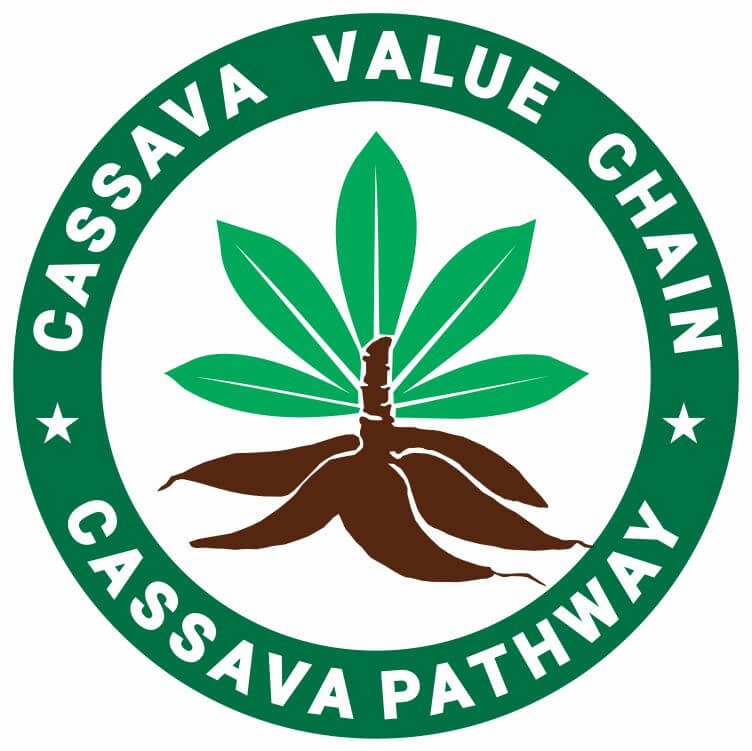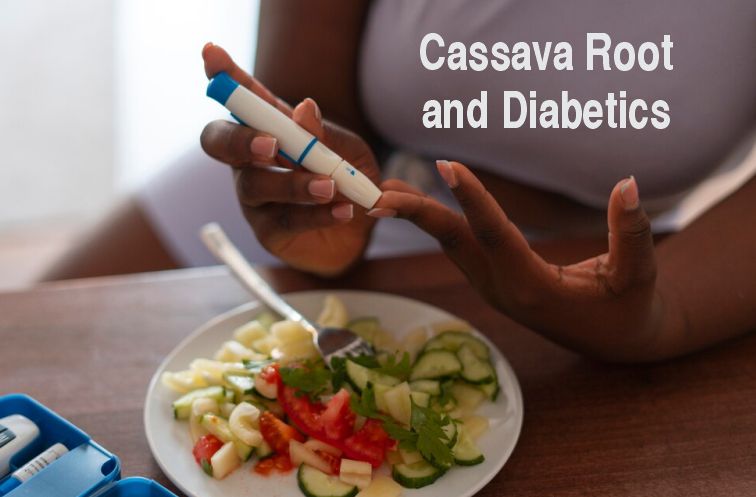Cassava root, also known as manioc or yuca, is packed with carbohydrates, making it a good energy source. But if you have diabetes, you might wonder if it’s the right choice for you. Here is everything you want to know about cassava root for diabetics.
Can diabetics eat cassava without risking blood sugar spikes? It’s a valid concern, as cassava is a carbohydrate-rich root vegetable, and like many starchy foods, it can impact glucose levels.
However, when eaten correctly, cassava may offer some surprising benefits for people with diabetes.
According to Healthline, it contains resistant starch and dietary fiber, both known to support better blood sugar management by slowing digestion and improving insulin sensitivity.
But the glycemic index of cassava, along with how it’s prepared, makes all the difference.
In this comprehensive guide, we explore the relationship between cassava and diabetes, including its effects on blood sugar, the safest preparation methods, and expert tips to help you include it wisely in your diabetic meal plan.
If you’re living with diabetes, this is what you need to know before adding cassava to your plate.
This guide explores the nutritional pros and cons of cassava for diabetics, offering practical tips to help you decide whether and how to include it in your meal plan without compromising your health.
Recommended: Warnings and Side Effects of Cassava
Main Points
- Cassava contains high carbs, but resistant starch helps manage blood sugar by slowing digestion and improving insulin sensitivity in diabetics.
- Boiled or fermented cassava has a lower glycemic index, making it safer for diabetics compared to fried or processed forms.
- Pair cassava with lean protein, fiber-rich vegetables, and healthy fats to stabilize blood sugar and avoid glucose spikes.
- Moderation is crucial; limit cassava to small portions and monitor blood glucose responses to understand your body’s reaction.

Table of Contents
- Main Points
- Cassava and Blood Sugar: What You Should Know
- Nutritional Profile of Cassava Root in a Nutshell
- Potential Health Benefits for Diabetics (When Consumed Wisely)
- Risks of Cassava for Diabetics
- Scientific Perspective and Expert Tips for Diabetics
- How to Eat Cassava Safely as a Diabetic
- Better Ways to Include Cassava in Your Diabetic Meal Plan
- So, is Cassava Good for Diabetics?: Pros
- Cassava Root for Diabetics: Cons
- Best Ways for Diabetics to Eat Cassava
- Frequently Asked Questions
- Conclusion
Cassava and Blood Sugar: What You Should Know
Cassava root directly affects your blood sugar because it’s rich in carbohydrates, especially starch.
When you eat cassava, your body breaks these carbs down into glucose, which enters your bloodstream and triggers an insulin response.
This process can cause a rapid rise in blood sugar, particularly when cassava is eaten alone or in large amounts.
Its glycemic index is typically high, often above 70, which means your blood glucose levels may spike shortly after consumption.
However, this effect can be influenced by how cassava is prepared and what it’s eaten with.
When boiled, cooled, or combined with fiber and protein, its impact on blood sugar can be reduced.
Cassava also contains resistant starch, which slows digestion, promotes satiety, and may support insulin sensitivity.
Recommended: 11 Surprising Benefits of Cassava Leaves
Nutritional Profile of Cassava Root in a Nutshell
Cassava is rich in carbohydrates, with about 38 grams per 100 grams of raw root.
This makes it an excellent energy source, but a food that diabetics should approach with caution.
- Carbohydrates: High levels mean potential blood sugar spikes.
- Protein: It contains around 1.5 grams per 100 grams, which is low compared to other sources.
- Fat: Nearly negligible at 0.3 grams per 100 grams.
- Fiber: About 1.8 grams per 100 grams, which may help regulate blood sugar absorption.
- Glycemic Index (GI): Ranges from 46 to 75, depending on preparation. Boiled cassava has a lower GI than fried or processed versions.
The way you prepare cassava matters. Some cooking methods can lower its GI, making it more diabetes-friendly, while others can increase the risk of blood sugar spikes.
See more on cassava root nutritional profile.
Potential Health Benefits for Diabetics (When Consumed Wisely)
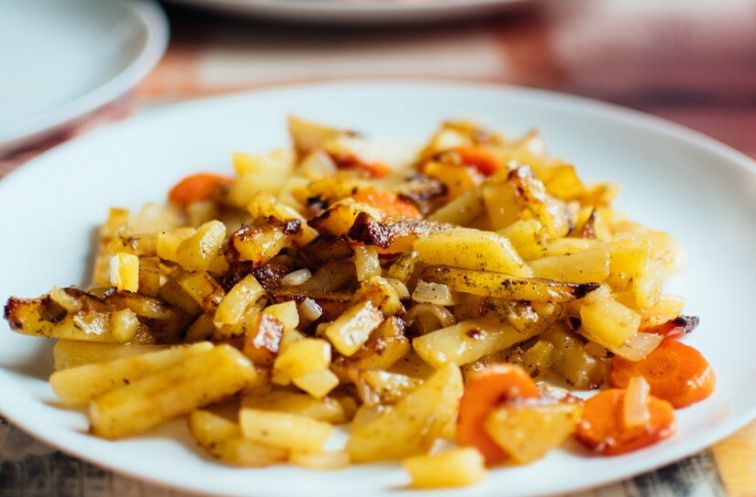
If you’re managing diabetes, you’re likely careful about the carbs you eat.
Cassava might not be the first thing that comes to mind, but when eaten the right way, it can help with blood sugar control.
Resistant Starch in Cassava: A Friend to Your Blood Sugar
Cassava is high in resistant starch, a type of carbohydrate that doesn’t fully break down in your small intestine.
Instead, it reaches your large intestine and feeds the good bacteria in your gut.
This process may improve how your body uses insulin and help keep your blood sugar levels steady.
Why that matters for you: Better insulin response can mean fewer blood sugar spikes and better long-term control.
Related: Is Cassava Allowed in Paleo Diet?
Slow-Digesting Carbs: Stable Energy Without the Spikes
Cassava’s carbs don’t break down as quickly as those in white bread or sugary snacks.
That means your energy is released slowly, helping you avoid the highs and crashes that often come with fast-digesting foods.
Try this: Swap your usual refined grains with cassava-based meals a few times a week and see how your body feels.
Naturally Gluten-Free: A Safe Option for Sensitive Stomachs
If you’re avoiding gluten, cassava can widen your meal options. It’s naturally gluten-free, so it won’t trigger flare-ups if you have celiac disease or gluten sensitivity.
It’s also free from common allergens, making it a safe base for many recipes.
Digestive Support: More Than Just Fiber
Cassava isn’t just about carbs. It also gives your gut some support. The fiber in cassava helps with regular bowel movements, which can keep your digestive system on track.
A healthy gut may also lead to better blood sugar control.
Pair cassava with a mix of protein and healthy fats for a balanced plate that works with your glucose goals.
Risks of Cassava for Diabetics
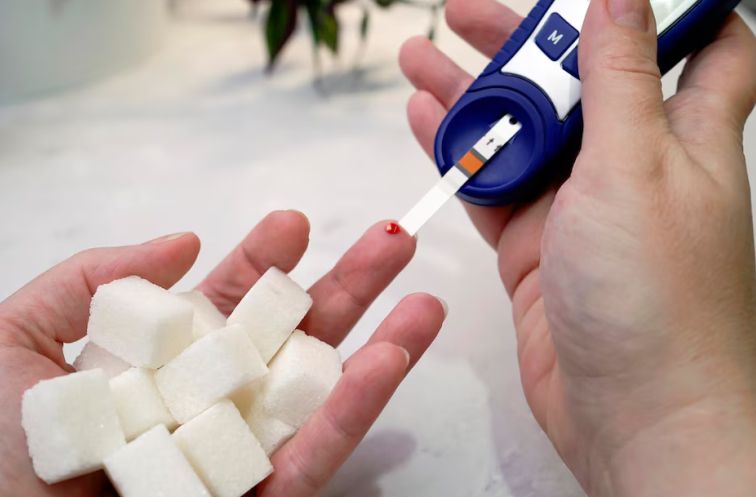
Cassava is popular in many diets, but if you’re managing diabetes, it’s important to be aware of the potential risks.
Let’s break it down.
High Carbohydrate Content: Watch Your Portions
Cassava is high in carbohydrates. A 100-gram serving packs about 38 grams of carbs, which can quickly raise your blood sugar levels.
If you don’t monitor your portion sizes, this can lead to spikes in your glucose levels.
What you can do:
- Keep portions small
- Track your carb intake
- Balance with other foods to keep your blood sugar in check
Cyanide Risk: Proper Preparation is a Must
Raw cassava contains compounds that can release cyanide, a toxic substance. This poses a serious health risk if not prepared correctly. Even a small amount of raw cassava can be harmful.
How to stay safe:
- Never eat raw cassava
- Always cook it thoroughly
- Follow safe preparation methods to eliminate harmful toxins
Over-Reliance on Starchy Foods: Maintain Balance
Relying too heavily on starchy foods like cassava may affect the balance of your diet.
While cassava provides carbs, it’s important to include a variety of other foods in your meals, such as vegetables, lean proteins, and healthy fats.
Why balance matters:
- Over-dependence on starches may lead to nutritional gaps
- A balanced diet supports better blood sugar control
- Variety ensures you’re getting all the nutrients you need
Scientific Perspective and Expert Tips for Diabetics
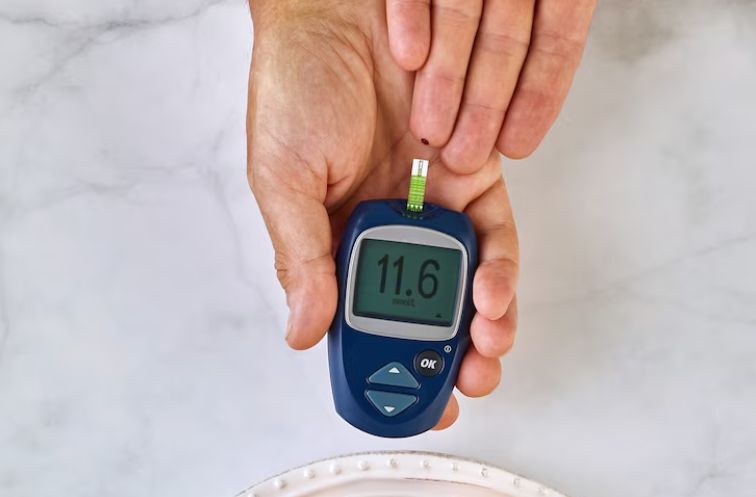
Recent studies and expert recommendations reveal that cassava can be part of a healthy diet for people managing diabetes.
While cassava is often thought of as a carbohydrate source, it also offers fiber and nutrients that can contribute to your overall nutrition.
However, understanding its glycemic impact is important when adding it to your meal plan.
Glycemic Impact of Cassava
Cassava has a relatively high glycemic index (GI), depending on the cassava product, which means it can cause a quick rise in blood sugar.
Experts suggest that you can still include cassava in your diet, but it’s important to do so in a controlled way.
Pairing cassava with high-fiber foods, lean proteins, and healthy fats can help reduce its effect on your blood sugar.
For example, combining cassava with vegetables, legumes, or grilled chicken can balance your meal and keep your blood sugar levels stable. See an in-depth guide on the glycemic index of cassava.
Portion Control is Key
One of the most important tips from healthcare professionals is portion control.
You should pay attention to the amount of cassava you’re consuming, ensuring it fits within your daily carbohydrate allowance.
A balanced meal, with a proper serving size of cassava, will help you manage your blood sugar more effectively.
Maximize Nutritional Benefits
While managing blood sugar is a priority, you shouldn’t overlook the other benefits cassava provides.
It’s packed with antioxidants and other nutrients that can support overall health.
Experts recommend choosing whole cassava over processed forms like cassava flour or snacks, as whole foods retain more of their nutritional value.
Monitor Your Blood Sugar
Healthcare professionals also advise checking your blood glucose levels after eating cassava.
This helps you understand how your body responds to it, which can guide your food choices.
By keeping track of your blood sugar levels, you can ensure that cassava fits into your diet in a way that supports your health goals.
How to Eat Cassava Safely as a Diabetic
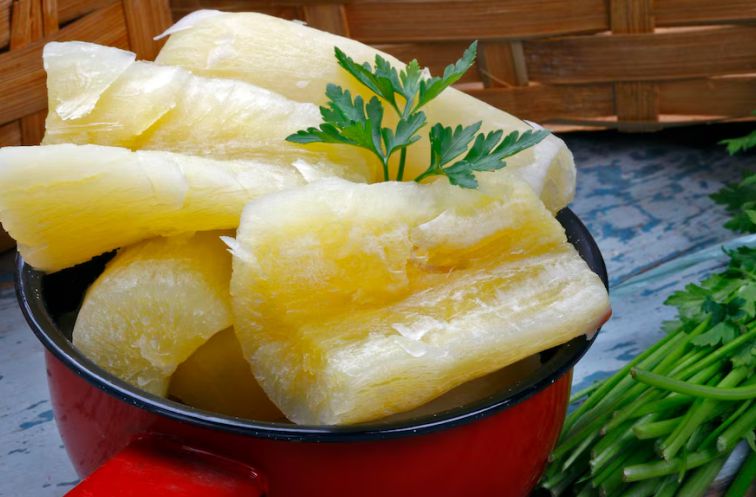
Cassava can be part of your diabetic diet if you know how to prepare it properly.
With the right cooking methods and pairing strategies, you can enjoy cassava while managing your blood sugar levels effectively.
Best Cooking Methods for Cassava
Boiling is one of the safest ways to cook cassava. It softens the tuber, makes it easier to digest, and helps reduce its glycemic impact by leaching out some of the starch.
To further minimize risks, consider soaking the cassava overnight. This helps remove harmful cyanogenic compounds that can be toxic if consumed in large amounts.
Baking cassava is another good choice. It caramelizes the natural sugars, which might lower its glycemic response.
If you’re up for trying something different, fermenting cassava creates prebiotics, which can support gut health and help regulate blood sugar. More on how to cook cassava roots.
Pairing Cassava with the Right Foods
Cassava is high in carbs, so balancing it with other nutrients is key. Add lean proteins like grilled chicken or fish, healthy fats such as avocado, or fiber-rich leafy greens to your meal.
These additions slow down the digestion of carbs, preventing blood sugar spikes and helping you feel full longer.
Tip: Combine cassava with these foods to keep your meal balanced and stable.
Portion Control for Blood Sugar Balance
It’s important to keep an eye on your serving size. A good rule of thumb is to limit your cassava portion to about half a cup, cooked.
The exact amount depends on your overall carb goals and how your blood sugar reacts. Be sure to check with your healthcare provider to determine the best portion size for your needs.
Better Ways to Include Cassava in Your Diabetic Meal Plan
Adding cassava to your diabetic meal plan can be done in a safe and nutritious way.
When you plan your meals thoughtfully, cassava can add variety and essential nutrients without causing blood sugar spikes.
Let’s look at some practical ways to include it.
Use Cassava Flour for Baking and Cooking
Cassava-based flour is a great gluten-free alternative that works well in baking and cooking.
It’s a solid choice for low glycemic index (GI) recipes, which help keep your blood sugar stable.
Try swapping regular flour with cassava flour to make meals that are both tasty and blood-sugar-friendly.
Tip: Combine cassava flour with whole grains to further balance your meals and reduce the glycemic impact.
Try Fufu with Non-Starchy Vegetables and Protein
Fufu, a popular dish made from cassava, pairs well with non-starchy vegetables and lean protein.
This combo creates a balanced plate with the right nutrients while keeping your blood sugar levels in check.
By adding proteins like chicken or fish, and a variety of veggies, you can make a satisfying and diabetes-friendly meal.
Opt for Sweet Cassava
Sweet cassava is safer for diabetics than bitter varieties, as it contains lower levels of cyanide. This makes it a safer option to include in your diet.
Sweet cassava works well in both savory and sweet dishes, so you can enjoy it without compromising your health.
So, is Cassava Good for Diabetics?: Pros
Cassava isn’t all bad for diabetics. When consumed in moderation and prepared correctly, it offers some health benefits.
1. Contains Resistant Starch
Resistant starch functions like fiber, slowing digestion and reducing blood sugar spikes. Boiling or fermenting cassava can increase its resistant starch content.
2. Gluten-Free Alternative
If you’re diabetic and also need to avoid gluten, cassava is a safe option. It works well in gluten-free recipes, including flour for baking and cooking.
3. Provides Key Nutrients
Cassava contains vitamin C, vitamin B6, folate, and potassium, all of which contribute to overall health. Potassium, in particular, supports heart health, which is important for diabetics.
4. Can Be Prepared for Lower GI
Boiling cassava instead of frying it lowers its glycemic impact. Pairing it with fiber-rich foods like vegetables and legumes further slows down glucose absorption.
Cassava Root for Diabetics: Cons
Despite its benefits, cassava has some drawbacks that diabetics need to consider.
1. High Carbohydrate Content
Cassava is carb-heavy. Eating too much can cause blood sugar spikes, especially if it’s fried, processed, or eaten in large portions.
2. Glycemic Index Can Be High
Some cassava varieties and preparation methods push its GI into the high range. Fried cassava or cassava-based processed foods can raise blood sugar quickly.
3. Contains Cyanogenic Compounds
Raw cassava contains cyanogenic glycosides, which release cyanide when not cooked properly. Always soak, ferment, or boil cassava thoroughly to eliminate this risk.
4. Low in Protein and Healthy Fats
Cassava alone lacks the protein and healthy fats needed for a balanced meal. Relying on it without pairing it with nutrient-rich foods can lead to an unbalanced diet.
By considering these points, diabetics can make informed decisions about how to safely include cassava in their diet.
Here’s a tabulated version of the pros and cons of cassava:
| Pros | Cons |
|---|---|
| Contains Resistant Starch: Functions like fiber, slowing digestion and reducing blood sugar spikes (increases when boiled or fermented). | High Carbohydrate Content: Can cause blood sugar spikes, especially when fried or processed. |
| Gluten-Free Alternative: Safe for diabetics avoiding gluten and works well in gluten-free recipes. | Glycemic Index Can Be High: Some varieties and preparations can cause quick blood sugar rises. |
| Provides Key Nutrients: Rich in vitamin C, B6, folate, and potassium for overall health. | Contains Cyanogenic Compounds: Raw cassava contains cyanogenic glycosides, releasing cyanide if not cooked properly. |
| Can Be Prepared for Lower GI: Boiling cassava reduces its glycemic impact; pairing with fiber-rich foods slows glucose absorption. | Low in Protein and Healthy Fats: Lacks protein and fats, requiring pairing with other nutrient-dense foods. |
Best Ways for Diabetics to Eat Cassava
If you want to include cassava in your diet, these strategies can help you enjoy it without risking blood sugar spikes.
1. Choose the Right Cooking Method
- Boiling: Best for lowering GI and increasing resistant starch.
- Fermenting: Reduces cyanogenic compounds and improves digestion.
- Avoid Frying: Fried cassava absorbs a lot of oil, increasing calories and GI.
2. Pair with Fiber and Protein
Combine cassava with vegetables, beans, or lean proteins to slow sugar absorption. For example, eating cassava with a high-fiber vegetable stew can make it more diabetes-friendly.
3. Watch Your Portions
Stick to small servings. A portion of about ½ cup of boiled cassava (around 75 grams) is a safer choice than a plateful of fried cassava chips.
4. Limit Frequency
Enjoy cassava occasionally rather than daily. Mixing it with whole grains and other low-GI carbohydrates helps keep blood sugar levels stable.
Frequently Asked Questions
Can diabetics eat cassava safely?
Yes, when eaten in moderation and prepared properly, cassava can be safe for diabetics, especially when paired with fiber, protein, and healthy fats.
What is the glycemic index of cassava?
Cassava’s glycemic index ranges from 46 to 75, depending on how it’s cooked. Boiled cassava has a lower GI and is more diabetes-friendly.
Does cassava spike blood sugar levels?
Cassava can spike blood sugar, especially in large portions or fried forms. Proper preparation and balanced meals help reduce that impact significantly.
Is cassava flour better for diabetics than raw cassava?
Cassava flour is often more processed and may have a higher glycemic load. Whole boiled cassava is usually a better option for managing blood sugar.
Conclusion
Cassava for diabetics can be a part of a healthy diet when consumed with caution and proper preparation.
While its high carbohydrate content and glycemic index may lead to blood sugar spikes, methods like boiling or fermenting can reduce its glycemic impact.
Additionally, cassava’s resistant starch and fiber content offer potential benefits, including better blood sugar management and improved insulin sensitivity.
It’s crucial to pair cassava with protein and healthy fats, and monitor portions carefully to avoid blood sugar fluctuations.
By incorporating cassava wisely and balancing it with other nutritious foods, diabetics can enjoy its benefits while maintaining control over their glucose levels.
References
- Research Progress on Hypoglycemic Mechanisms of Resistant Starch: A Review
- Effect of processing and variety on starch digestibility and glycemic index of popular foods made from cassava
- Diabetes is not Caused by Cassava Toxicity: A Study in Tanzania
- Cassava Glycemic Index: High or Low?

Chimeremeze Emeh is a writer and researcher passionate about Africa’s most transformative root crop—cassava. Through his work at cassavavaluechain.com, he explores the entire cassava industry, from cultivation and processing to its diverse applications in food, health, and industrial use.
He also writes for palmoilpalm.com, where he shares his extensive experience and deep-rooted knowledge of palm oil, covering red palm oil, palm kernel oil, and refined products. His work there reflects his lifelong connection to agriculture and his commitment to promoting sustainable value chains in Africa.
Driven by curiosity and purpose, Chimeremeze aims to shed light on how cassava continues to empower communities, strengthen food systems, and link traditional farming wisdom with modern innovation.
